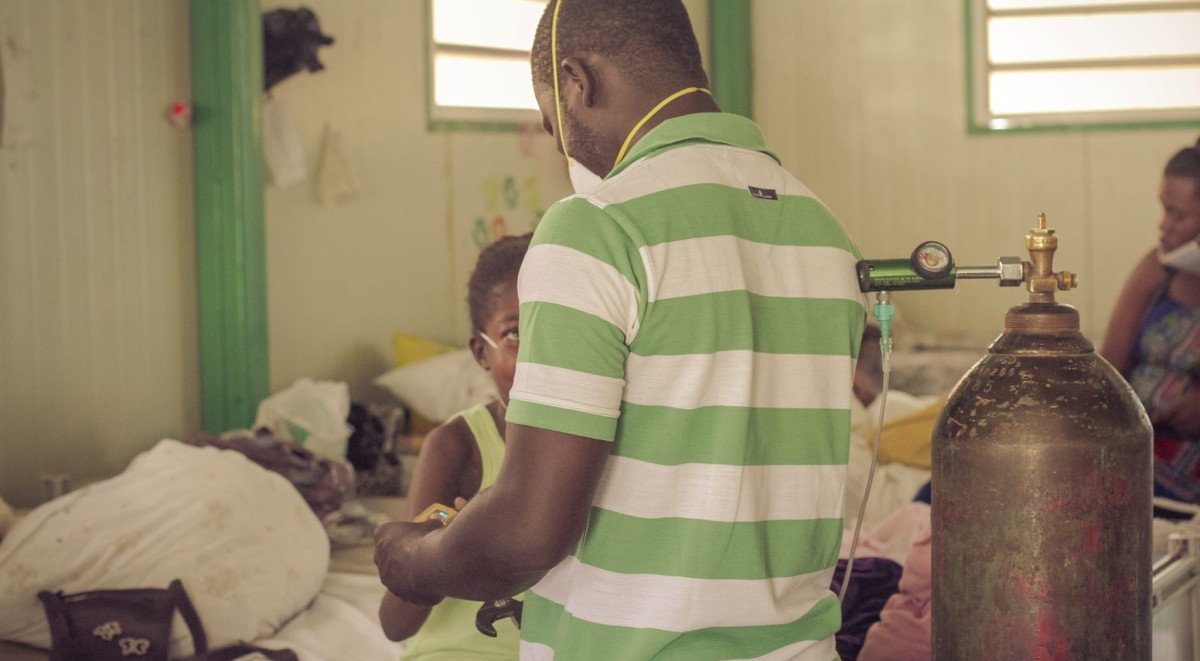
Barron’s: How to Wisely Give Humanitarian Aid by Jonathan Katz
Humanitarian aid has developed a bad reputation in recent years. When an earthquake ravaged southern Haiti in January 2010, leaving an estimated 316,000 dead, $9 billion was committed for relief and reconstruction, including $3 billion in private donations. President Bill Clinton, spearheading reconstruction, promised to “build back better.” Today, conditions for millions in Haiti remain as precarious—or worse—as on the day the earthquake struck. But some activists found ways to work effectively after the earthquake, offering up valuable lessons to others wanting to be of service during the next humanitarian catastrophe.
Consider Dr. Megan Coffee, then 33, who arrived two weeks after the earthquake hit. While most foreign doctors came with nongovernmental organizations and government agencies, Coffee came alone, bringing only her formidable training. Her professors at Harvard medical school had included Jim Kim, president of the World Bank, and Paul Farmer, the legendary public-health expert. Coffee had also done field research on HIV transmission in Zimbabwe and South Africa. She even had a doctorate from Oxford in the mathematical modeling of infectious diseases……
By February 2010, less than a month after the disaster, the American doctor and a growing team of Haitian nurses had established a thriving tuberculosis ward under a blue tent in the hospital’s courtyard. The nurses brought their local experience of effectively managing large numbers of patients with few supplies. With no intravenous needles to spare, for instance, every IV had to be placed right the first time and all orders had to be essential. “It was about making sure an entire system could care for patients, rather than ever being lost in the details, and the nurses understood that very well,” Coffee recalls…….
Dr. Ray Yip arrived in Port-au-Prince in the summer of 2012, two years after the quake. He was visiting his daughter, Tara, an aid worker working in the capital. A pediatric hematologist with a master’s in public health, Yip had spent years responding to disasters with the U.S. Centers for Disease Control and Prevention and the International Rescue Committee. In 2007, he became the Bill & Melinda Gates Foundation’s director in China and its representative in Asia.
Yip quickly recognized the signs of a country whose institutions were devastated before the 2010 quake. Hand-built breezeblock shacks haphazardly competed for space with buildings still cracked and bowed two years after the magnitude-7.0 earthquake hit. Most disturbing were the hospitals, where malnourished patients struggled to survive in the care of overworked, underfunded doctors and nurses. His day job was pick out projects for a $40 billion foundation, but he did not know where to even start in Haiti—until his daughter told him to go see Dr. Coffee at her ward.
Yip spent time playing with a 5-year-old patient whose parents had died of AIDS, and watched the clinic staff work as a team in conditions that would make an American doctor blanche. That afternoon, a very sick patient who had just arrived, died. The nurses tended to her final moments, then returned quickly to caring for their other patients. Yip felt he had seen something special. “What’s impressive about [Dr. Coffee] is that she’s devoting her heart and soul,” Yip says. “She could have a much more organized life back in Boston, back in the states. That is extremely unusual. That’s devotion.”
….The lessons from Haiti are manifold, including the fact NGO brand names don’t always know best, and that entrepreneurial individuals flexible enough to work within a nation’s existing systems can many times go farther.
Another NGO insider who found Coffee was Jody Weschler, a former nurse from Winnetka, Illinois, who arrived in March 2010 with her doctor husband, Frank. They were volunteers with International Medical Corps, a $100 million California-based NGO, but Weschler quickly learned that it was best to talk to Dr. Coffee. “She knew the right person, or could direct us to the right area … I couldn’t believe she did as much as she did with as little as she had and always did it with such grace. She never seemed to lose her patience.” IMC left the hospital within months. Back in the Chicago suburbs, the Weschlers began donating about $500 a month to Coffee’s operation and rallying others to do the same. “You’d be wasting your money trying to support a group that doesn’t use Haitian institutions,” says Weschler.
Unlike the foreign aid workers collecting high salaries and living in rented mansions in Port-au-Prince’s hills, Coffee collects no salary; she gets by with free apartment, food and beers, mostly donated by a volunteer collective. A donor pays for her health insurance. The Weschlers, wisely realizing that if she collapses so does her highly effective unit, noticed Coffee was wasting time and risking life on ramshackle public transportation. The couple made her hire a car and driver and additionally picked up the tab.
Coffee has since set up an NGO to manage the operation. Called Ti Kay Inc.—meaning “little house”, a nickname for tuberculosis—it raised more than $300,000 in 2012. But new dangers lurk. A long-delayed, $50 million U.S. and French government project to rebuild the general hospital has forced Coffee’s TB ward to temporarily shut down. She hopes to move her operation to nearby St. Luke’s Hospital and establish a continuing medical education program on intensive care and TB/HIV, but to do so must raise an additional $150,000. Dr. Marc Edson Augustin, the co-medical director at St. Luke’s, hopes Coffee will succeed. “Every day we see TB patients,” he says. “We don’t know where to send them besides Dr. Coffee.”
The lesson: A modest donation to a clued-in individual can sometimes be far more effective than a large donation to a brand name philanthropic institution.
